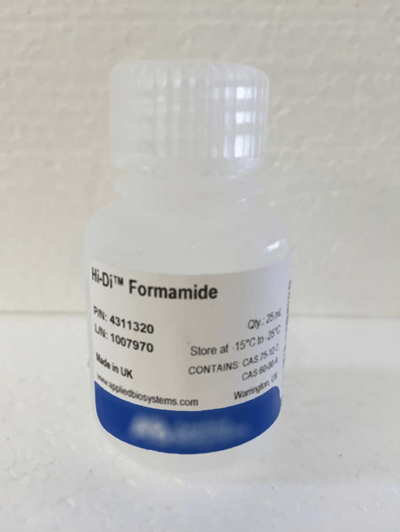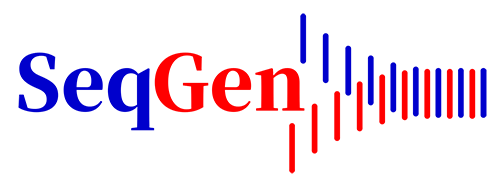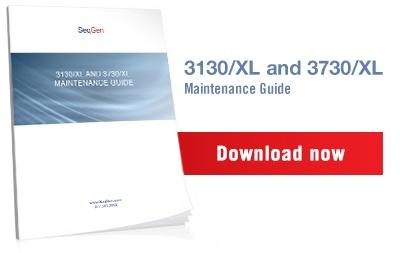 We love hearing from you! After sending out our recent communication on polymer cost saving tips, we received a great question from one of our end users concerning Hi-Di.
We love hearing from you! After sending out our recent communication on polymer cost saving tips, we received a great question from one of our end users concerning Hi-Di.
After digging into it, we discovered some great information that we thought might be helpful to others. Here is the background information and also our research findings. Enjoy!
A 3130xl user found that when employing water for injection vs. formamide, he ended up with issues which didn’t allow base calling even when employing the 3130xl standards. Well… we dug into this a little further and here is some information courtesy of Louisiana State University: When to resuspend in water vs. formamide?
With good technique, signal strengths should be well above the minimum threshold when samples are resuspended in formamide. However, if signal strength is a problem even after thoroughly troubleshooting your situation, consider resuspending your samples in water as this can increase signal strength by ≥10X. Nevertheless, please note the ‘cautions’ listed below:
Caution 1: Samples should be overlain with mineral oil to prevent oxidation and sample evaporation. Without the oil overlay, your samples may degrade substantially if they are not run soon after being resuspended; with the overlay, sequenced DNA is nearly as stable in water as in formamide. Further, freezing your resuspended samples until they are run on the 3130XL instrument may help to limit the degradation.
Caution 2: If omitting the oil overlay, resuspend in ≥20-µl of water to minimize the likelihood that evaporation will reduce sample volumes below the minimum required for the capillary array pins to make good contact with the samples. Poor contact will lead to reduced signal; no contact will, of course, lead to failed injections. ABI specifies a minimum of 7-µl, but notes that even a slight tilt to the autosampler can mean that >7-µl will be required in some wells; thus, the true minimum is more like 10-µl. Do NOT assume that covering samples with the septa mat will deal with this problem; water evaporates easily through the septa mat, even when inside the 3130xl sequencer. Evaporation rates vary among sequencers (perhaps due to their location relative to room air ducts); however, in our facility, for a single full 96-well plate, a starting volume of 20-µl has been sufficient. As it takes ~12-hours to run a full 96-well plate (using the standard run module for POP7 and a 50-cm array), samples resuspended in water (without the oil overlay) should be run first if >1 plate is loaded onto the instrument.
Caution 3: If considering this option (i.e., water resuspension), please note that excessively strong signal reduces read length.
Caution 4: One purpose of resuspending samples in formamide is to maintain the DNA in a denatured state. So far, we have not noticed any problem with using water instead of formamide; however, resuspension in water might be inappropriate if your templates are capable of forming substantial secondary structure.
On a final note from Travis, our Service Manager – always have a bottle of Hi-Di available when we arrive to complete your preventative maintenance visit. This is absolutely essential for preparation of your spectral calibration plate.
If you're looking for more maintenance tips and tricks on your 3130/XL or 3730/XL, download our complete maintenance guide. This step-by-step manual to weekly, monthly, and semi annual maintenance for your machine will help you prolong the life of your equipment and ensure your sequencer is running at peak efficiency. Get your copy today!

